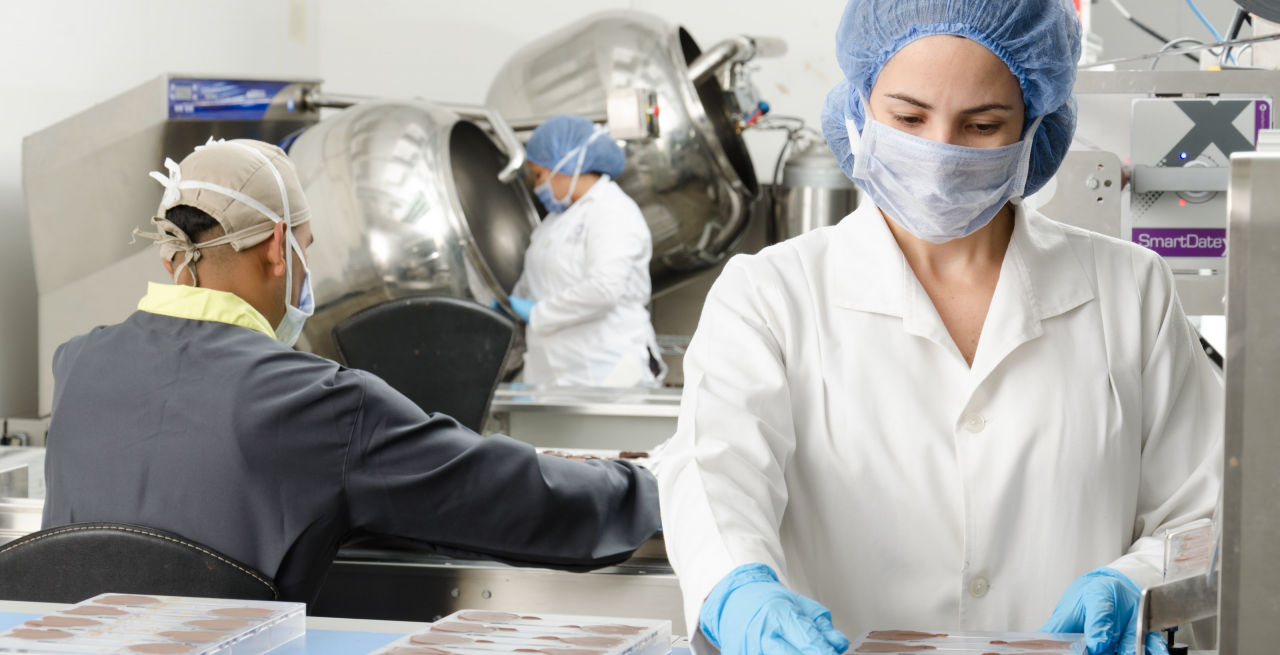Food Safety and Transparency Are the Lifeblood for Operators
6 Min Read By Jeffrey Cowan
Few scenarios strike more fear into a restauranteur’s heart than the prospect of serving food to patrons that makes them sick. Besides the obvious impact on customers, it can be extremely difficult to rebound from such an event as word spreads and casts doubt over the establishment’s reputation.
Avoiding such a calamity will always be a top priority among restaurant managers, not only by optimizing sanitation and safe handling practices in-house, but also through rigorous sourcing and supply chain management. However, even with the greatest attention to food safety, there is no single way to eliminate all foodborne illness because its sources are numerous and diverse. The network of food suppliers servicing operators spans a wide range – from small, family farms and independent bakeries to massive global conglomerates and everywhere in between. Every food product and ingredient that arrives on a diner’s plate first travels an epic journey from source to table; through harvest and processing locations, distribution channels, cold-chain operations, warehouses, trucking and storage. When contamination occurs, the industry’s coordinated, prompt response can have a real impact on minimizing exposure and spread of infection.
Traceability Is Essential
While recalls can happen for a host of reasons, food contamination is often discovered when someone gets sick by something they ate. If that food source can be identified, the traceback can begin – enabling the operator, supplier and distributor to erect a firewall of sorts, preventing further spread by removing all contaminated product from the supply chain.
However, you can’t eliminate what you cannot identify, and you can’t remove what you cannot find. Tracing contaminated products back to the original source through the entire supply chain is usually the only way to find out what has caused or allowed the contamination to occur. Often a specific location or facility is identified as the originator; for example, it may be a groundwater issue in a particular field at a certain grower’s farm, or a refrigeration glitch in a processing plant. These conclusions will drive remediation to prevent further incident and minimize costly recalls.
Industry stakeholders are working together to leverage technology and exchange standardized, digital data that helps identify, locate and trace a product’s journey back to its original source. A successful traceback process allows all remaining, potentially contaminated product (perhaps from the same batch or harvest) to be positively located in real time and quickly pulled out of the supply chain.
Regulatory Requirements
To drive traceability enhancements industrywide, the U.S. Food and Drug Administration (FDA) is using legislation to advance food safety progress and recommending the use of digital technology to support instantaneous, automated data exchange that enhances product traceability. The Food Safety Modernization Act (FSMA) represents the agency’s comprehensive efforts to advance this cause.
Later this year, the FDA will propose mandatory traceability requirements for “high-risk” foods on FDA’s Food Traceability List (FTL) under FSMA Section 204(b). The extra precautions take aim at 16 food categories that are the most frequent sources of outbreaks, and includes leafy greens, melons, tomatoes, nut butters, ready-to-eat deli salads, finfish and crustaceans, and all types of fresh-cut fruits and vegetables. Previously, FSMA only required “one up/one down” visibility of food products’ movement through the supply chain. Now, supply chain partners who handle foods that are on the FTL will have to keep more detailed records, emphasizing digitized data, to drive greater transparency.
The proposed rule would require companies who “manufacture, process, pack or hold” foods on the FTL to record certain Key Data Elements (KDEs) associated with different Critical Tracking Events (CTEs) in the supply chain. CTEs include growing, receiving, creating (manufacturing or processing), transforming and shipping; different KDEs will be required for each event. Supply chain partners will be required to maintain the data in their systems for two years and provide it to the FDA within 24 hours in the event of an outbreak. Industry-wide compliance is expected by the end of 2024.
GS1 US has been working with industry to enhance systems compatibility and make traceability more efficient through the use of GS1 Standards, the most widely used supply chain standards in the world, for years – long before FSMA. These standards help businesses uniquely identify companies, products, locations and assets in the supply chain. The standardized data, embedded in barcodes or Radio Frequency Identification (RFID) tags, creates a common language for sharing information between trading partners. Now, GS1 US is working with the food industry to identify how best to leverage GS1 Standards for tracking CTEs and KDEs.
Standards Support Collaboration
All supply chain partners are responsible for food traceability and must collaborate to make it effective; the use of standardized data systems so that all stakeholders can generate, exchange and understand one another’s information in real time. In many industries, GS1 Standards are already being implemented to enable granular traceability as well as improving supply chain efficiencies and inventory management. Some of the standards include:
- Product identification and Barcodes – The GS1 Global Trade Item Number™ (GTIN®) uniquely identifies a product so it can be visible for tracking in the supply chain. The GTIN can be embedded in a barcode, whether it’s a linear, UPC barcode on an individual item for use at checkout, a GS1-128 barcode on product cases and pallets, or a new two-dimensional (2D) data-rich barcode. These barcodes can also encode additional data such as expiration dates, batch/lot/serial numbers, and production dates to help support fast and accurate data capture and inventory tracking.
- Location identification – The GS1 Global Location Number (GLN) identifies locations and parties such as a farm or field, a packing house, manufacturing plant, a wholesaler, a loading dock, a grocery store, or a restaurant. GLNs help companies unambiguously map each stop a product makes along the supply chain.
- Master product data sharing – The GDSN (Global Data Synchronization Network™) allows trading partners to automatically share trusted product data, helping meet growing consumer demand for accurate, complete and consistent product information.
- Transactional data sharing – Transactional data sharing via EPCIS (Electronic Product Code Information Services) enables trading partners to record transaction events like shipping or receiving information to maintain a complete product lifecycle history along the entire supply chain.
Two-Dimensional Barcodes Carry Limitless Data
Forward-looking companies are investing in technology to advance data exchange and food safety. With robust traceability records providing end-to-end supply chain visibility, trading partners can quickly pinpoint products implicated in an outbreak and withdraw or recall them. When those records are digitized, traceback can be automated for faster, more effective response.
In addition to digital record-keeping and interoperable data exchange between supply chain partners, many suppliers are transitioning to a new and improved two-dimensional barcode (such as a QR code), which offers far greater data capacity than the traditional, linear (UPC) or GS1-128 barcode. This migration will support unlimited use cases, including better recall management and much more.
The ability to embed limitless data in a 2D barcode also gives suppliers an opportunity to meet customer demand for detailed product information. Increasingly, consumers want to know everything they can about the food they eat. A data-rich 2D barcode makes all this information available with a simple scan. In the foodservice setting, this gives chefs and servers quick and easy access to details such as country of origin, sustainability and fair-trade practices, and much more – allowing deeper engagement with customers who are increasingly interested in knowing the specifics. Savvy foodservice operators can further build values-based relationships with customers by highlighting product attributes beyond the standard ingredients list.
Sharing Synchronized, Standardized Supply Chain Data Can Reduce the Impact of Food Safety Issues
Harmonizing supply chain data throughout the food system is critical to help mitigate and contain the spread of foodborne illnesses by quickly identifying affected product and removing it from distribution and inventory. Modern, effective traceability systems based on industry standards that are universally understood and utilized can radically transform the entire food system by enabling full, end-to-end traceability.
The restaurant industry, like so many others, is still recovering from two years of upheaval, while learning to navigate unknown new territory in the post-pandemic environment. While the struggle continues, it’s good to know that technology is being unleashed to make the food supply safer than it has ever been – helping ensure that customers will return to their favorite eateries again and again.
To learn more about enabling traceability for food safety, please visit gs1us.org/new-era.


